
Fundamentals
The journey into understanding hair, particularly the intricate strands that coil and curve with ancestral memory, begins with a foundational concept ❉ Hair Classification. This is not merely a sterile scientific endeavor; rather, it is a profound way to articulate the varied expressions of the human scalp’s crowning glory. At its simplest, Hair Classification is the systematic arrangement of hair types into categories based on shared characteristics.
For Roothea, this delineation gains profound depth when we consider its historical interpretations and its resonance within textured hair heritage. It is a sacred lens through which we can begin to appreciate the remarkable diversity of Black and mixed-race hair, moving beyond simplistic labels to a more nuanced recognition of its innate qualities and the deep stories it carries.
Early attempts to designate hair, while often rudimentary, were rooted in keen visual observations of curl pattern, thickness, and perceived texture. These initial distinctions, though lacking the precise nomenclature of modern science, often informed traditional care practices and communal perceptions. The statement of hair types, even in their most elementary forms, allowed communities to share vital knowledge about specific needs, styling techniques, and botanical remedies passed down through countless generations. This collective wisdom, built upon centuries of intimate observation and tactile engagement, served as an informal yet potent classification system, guiding the tender touch and careful tending of hair, ensuring its health and spiritual integrity.
The earliest understandings of hair classification, while informal, were deeply woven into ancestral practices, guiding care and communal knowledge.
For individuals new to the study of hair, particularly those reconnecting with their textured hair’s legacy, understanding these basic categories offers a welcoming starting point. It allows for a shared vocabulary when discussing hair care, product choices, and styling methods, creating a sense of communal understanding. This common ground, however, must always be approached with a reverence for the diverse stories each strand carries, acknowledging that no single system can fully capture the spiritual and cultural significance of hair, which transcends mere physical attributes. It is a living, breathing testament to identity and lineage.
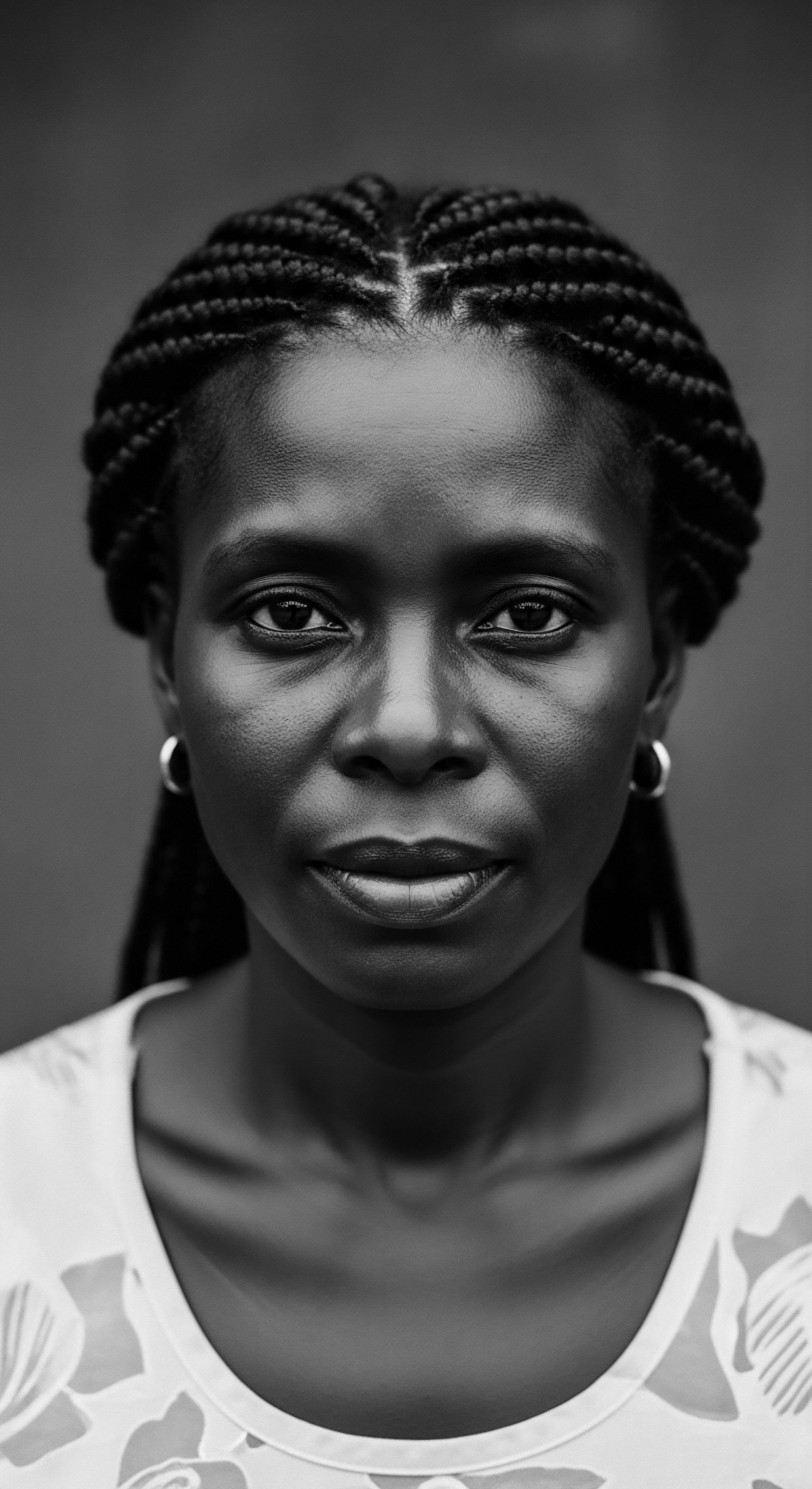
Visual Delineations ❉ Echoes from the Source
The initial perception of hair often rests upon its visual presentation, a silent language spoken by each curl and wave. For centuries, communities observed distinctions in hair’s natural inclination to coil, wave, or remain straight. This observation formed the very bedrock of rudimentary hair classification, often without formal nomenclature. Instead, descriptive terms, sometimes passed down through rich oral traditions, identified hair that was ‘tightly coiled,’ ‘loosely waved,’ or ‘softly curled.’ These descriptions were not value judgments but rather practical markers for daily interaction and care within ancestral communities, ensuring that hair was honored according to its inherent nature.
Consider the profound tactile experience of hair. The feel of a strand, its inherent resilience, and its ability to absorb and retain moisture were all subtle cues that intimately informed ancestral care practices. These sensory details contributed to an unwritten classification system, guiding the precise application of nourishing oils, rich butters, and potent herbs. The physical characteristics of hair were thus intimately connected to its holistic care, a sacred bond that continues to echo in contemporary textured hair routines, reminding us that true understanding comes from both sight and touch.
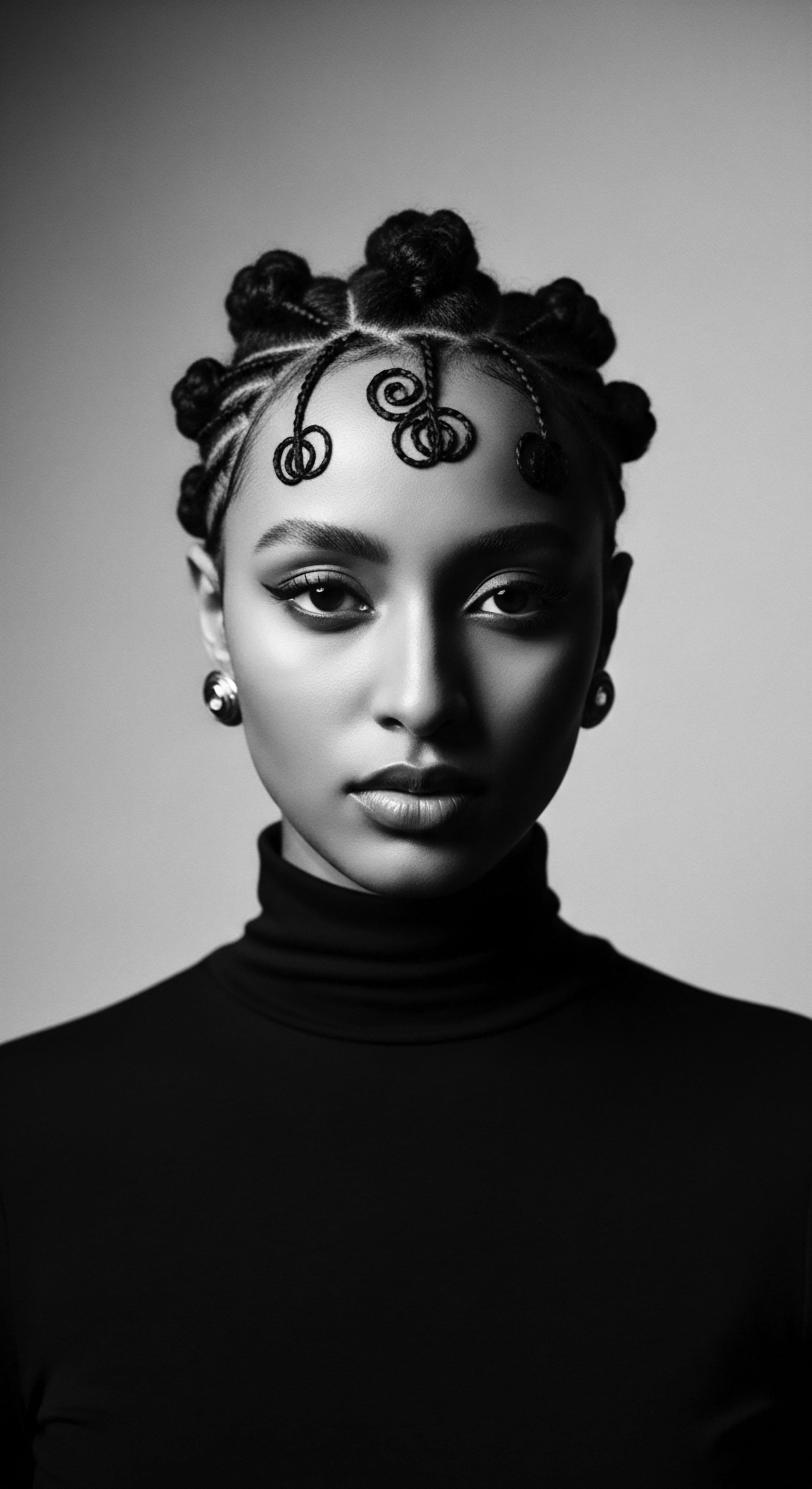
Foundational Categories ❉ A Starting Point for Understanding
While modern systems often employ numerical and alphabetical designations, the underlying concepts can be traced back to simpler, more intuitive observations. For textured hair, these often relate to the degree of curl or coil, providing a fundamental framework. These foundational categories help us appreciate the distinct needs of different hair expressions, allowing for a tailored approach to nurturing each unique strand.
- Straight Hair ❉ Lacking a visible curl pattern, this hair type tends to fall smoothly and often reflects light uniformly. Historically, its care centered on maintaining luster and preventing dryness, often through regular oiling and gentle manipulation.
- Wavy Hair ❉ Possessing a gentle ‘S’ shape, this hair exhibits more body and movement than straight hair, often forming loose, flowing patterns. Ancestral practices might have emphasized enhancing its natural movement and protecting it from environmental elements, using light emollients to preserve its soft undulations.
- Curly Hair ❉ Characterized by distinct loops and spirals, curly hair requires specific moisture retention strategies due to its often elevated cuticle. Traditional methods frequently involved rich emollients and careful manipulation to maintain definition and prevent frizz, honoring its delicate yet vibrant structure.
- Coily Hair ❉ Exhibiting tight, often zig-zag patterns or small, dense coils, coily hair is frequently the most densely packed of the curl patterns. Its care has always centered on profound hydration, gentle detangling, and protective styling, reflecting its unique structural composition and inherent fragility, a testament to its resilience and beauty.
These broad categories, though simple, represent the initial attempts to understand and respond to hair’s varied needs, forming the very foundation of hair wisdom. They set the stage for more complex systems, but always with the underlying truth that hair, in all its forms, is a living part of our identity and heritage, deserving of deep respect and tailored care.
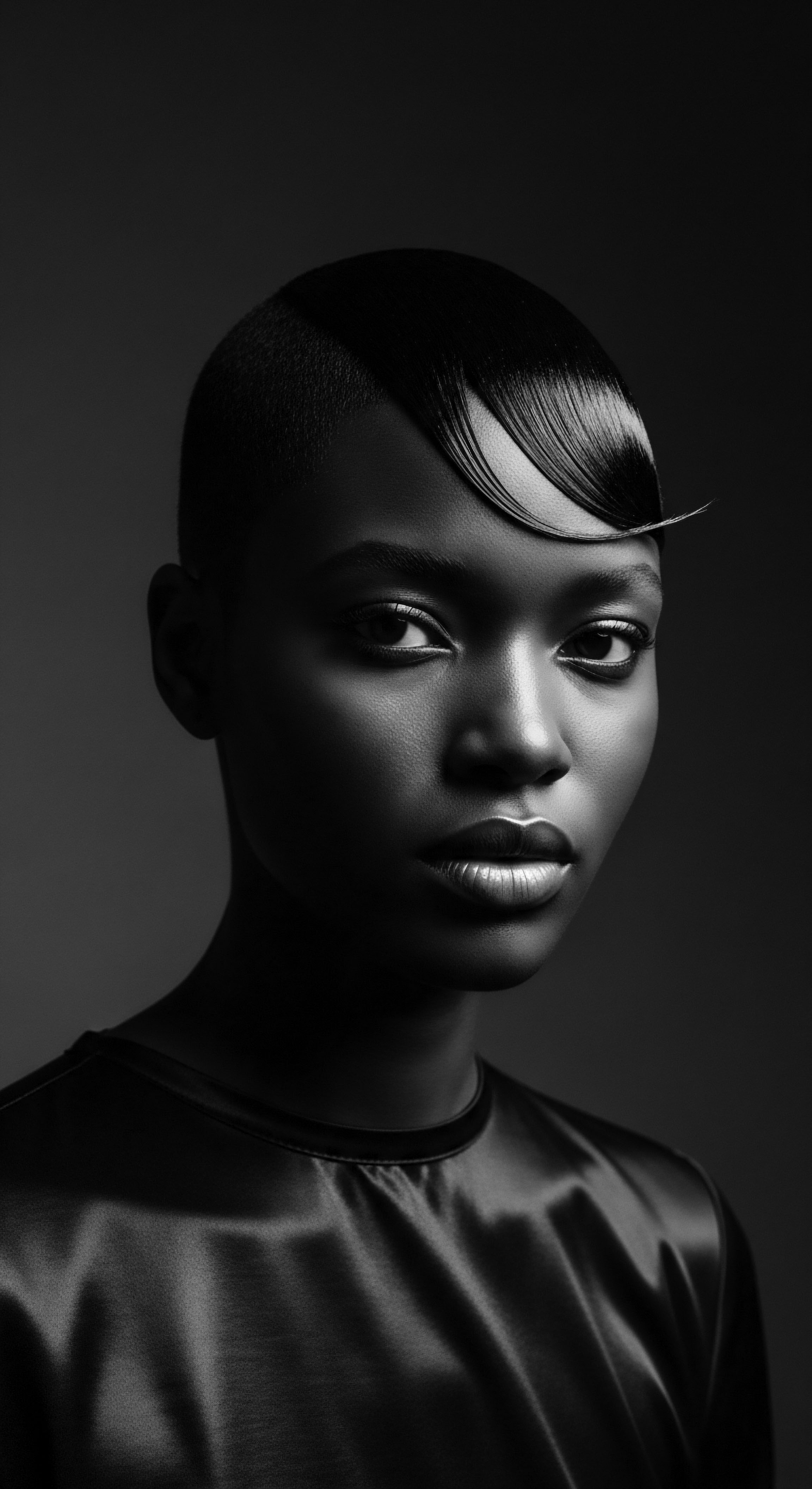
Intermediate
Moving beyond the rudimentary, the intermediate understanding of Hair Classification begins to dissect the inherent qualities of hair with greater precision, yet always through the sacred lens of heritage. Here, the explanation shifts from simple visual cues to a deeper examination of the hair strand’s architecture and its implications for care, particularly for textured hair. This level of delineation acknowledges that hair classification is not a static scientific declaration but a dynamic conversation, shaped by cultural perspectives, historical contexts, and the evolving needs of diverse communities. It is a recognition of the ‘Tender Thread’ that connects the biological reality of hair to the lived experiences of those who wear it.
The meaning of Hair Classification expands to encompass more than just curl pattern. It starts to incorporate factors like hair density (the number of strands per square inch on the scalp), strand thickness (fine, medium, or coarse diameter of individual strands), and porosity (the hair’s ability to absorb and retain moisture). These elements, often overlooked in basic classifications, are profoundly significant for textured hair, as they dictate how products perform, how styles hold, and how well the hair withstands environmental stressors. Ancestral wisdom, though not articulated in precise scientific terms, intuitively understood these attributes, leading to practices that honored hair’s specific requirements, ensuring its vitality and strength.
Hair classification at this level recognizes the intricate interplay of curl pattern, density, thickness, and porosity, each element vital to understanding textured hair’s unique care requirements.
For Roothea, the intermediate level of Hair Classification is where modern science begins to echo ancestral knowledge, creating a harmonious dialogue across time. For instance, the understanding of porosity — the hair’s capacity to take in water — finds its direct parallel in traditional methods of preparing hair for moisture, perhaps through steaming rituals over herbal infusions or the application of water-rich botanical extracts. The historical practices of sealing moisture with heavier oils and butters speak directly to managing low porosity, while light, penetrating oils might have been favored for higher porosity hair to prevent product buildup. This is not merely a coincidence; it signifies a deep, experiential knowledge of hair’s biological responses, honed over centuries of dedicated care.
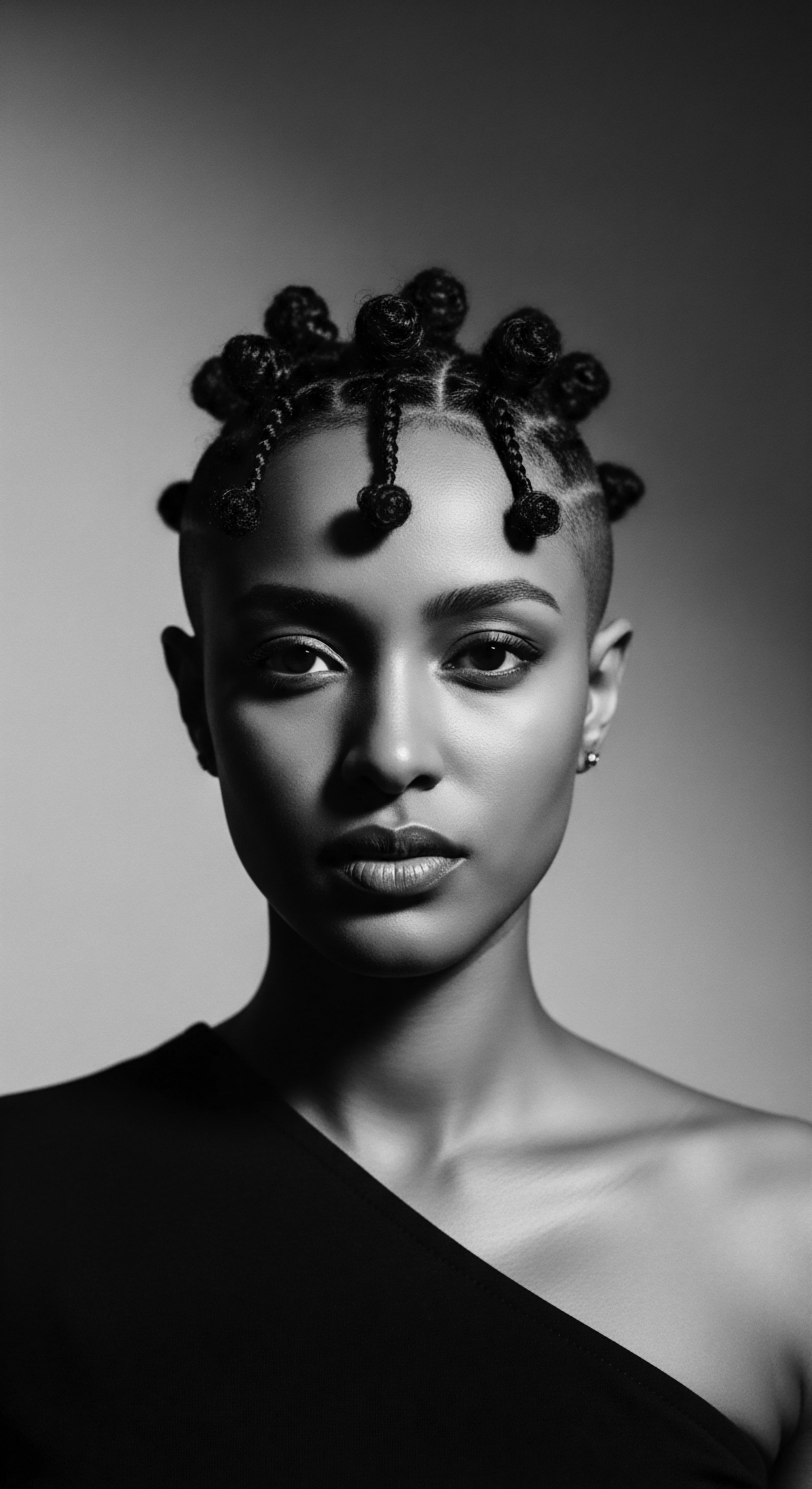
Beyond Curl Patterns ❉ Unveiling Hidden Attributes and Their Heritage Links
While curl pattern often dominates discussions of hair type, a more complete understanding necessitates a consideration of other vital characteristics. These attributes often dictated the success of traditional care regimens and the efficacy of natural ingredients passed down through generations, forming an unwritten manual for textured hair care.
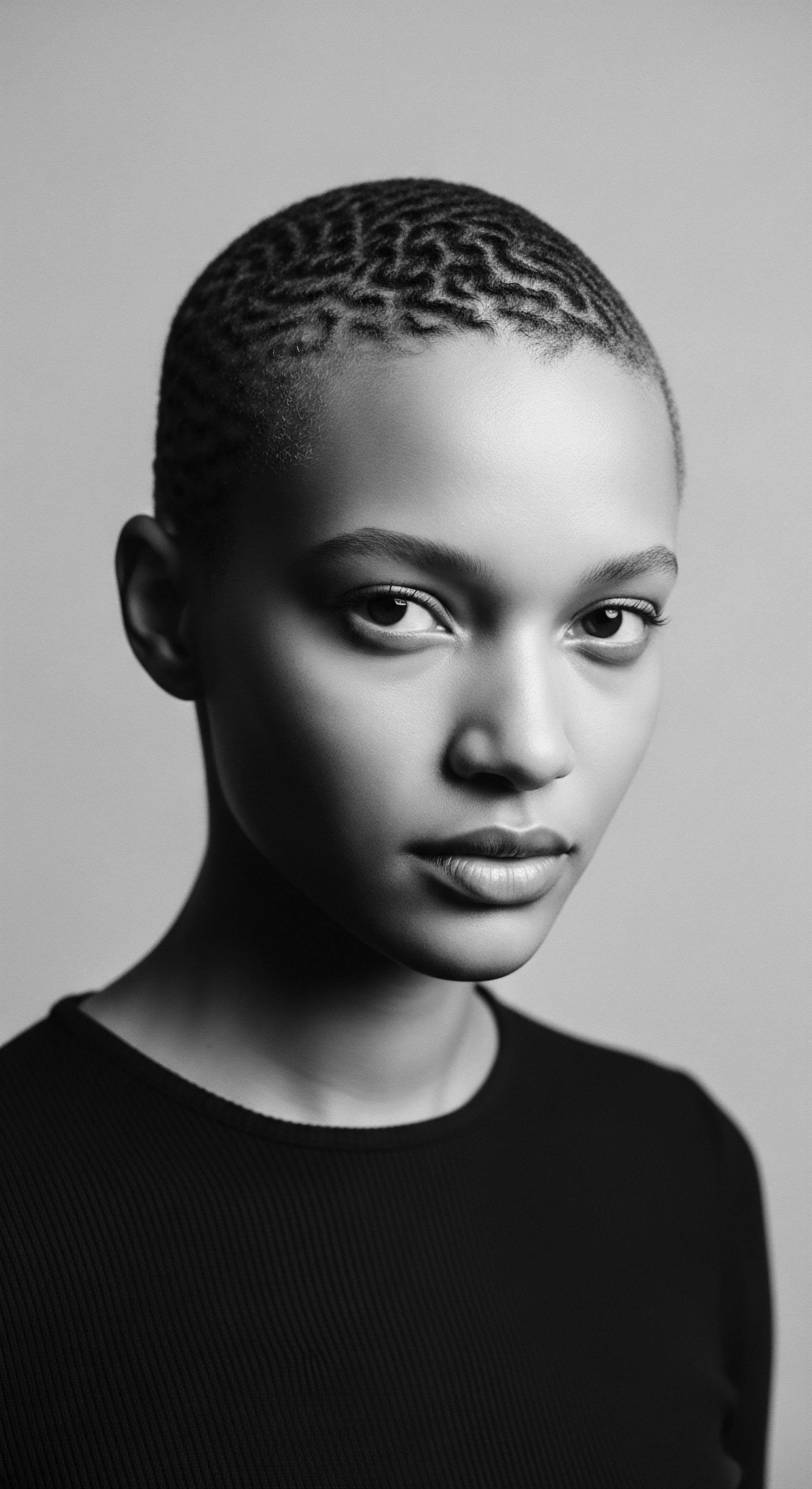
The Significance of Porosity ❉ A Legacy of Moisture Retention
Hair porosity refers to the condition of the hair’s cuticle, the outermost layer of the hair shaft. This layer, composed of overlapping scales, determines how easily moisture enters and leaves the hair. Understanding porosity is especially critical for textured hair, which often experiences varying levels of porosity along a single strand, demanding a nuanced approach to hydration.
- Low Porosity ❉ Hair with tightly closed cuticles, making it resistant to water and product penetration. Moisture tends to sit on the surface before absorption. Ancestral care often involved warmth (e.g. warm water rinses, steaming over herbal infusions, or warming oils before application) to gently lift the cuticle and allow vital moisture to penetrate, followed by lighter emollients.
- Medium Porosity ❉ Hair with moderately lifted cuticles, allowing for good moisture absorption and retention. This hair type generally holds styles well and responds favorably to a wide range of traditional treatments, often requiring a balanced approach to hydration and sealing.
- High Porosity ❉ Hair with widely open cuticles, which absorbs moisture quickly but loses it just as rapidly, often feeling dry. This can result from damage or be an inherent characteristic. Traditional practices for high porosity hair focused intensely on sealing in moisture with heavier butters, rich oils, and protective styles to minimize exposure and moisture loss, preserving its internal hydration.

Density and Strand Thickness ❉ Practical Implications for Ancestral Styling
The density of hair refers to the number of individual hair strands on the scalp, while strand thickness describes the diameter of a single hair shaft. Both play a substantial role in how hair behaves and how it was historically managed, influencing styling choices and communal grooming rituals.
Hair density profoundly influenced the amount of product used in traditional rituals and the time required for elaborate styling. Communities with a legacy of very dense hair might have developed communal grooming practices, where styling was a shared, bonding experience, a testament to the time and effort involved. These sessions were not just about aesthetics but also about transmitting cultural knowledge and strengthening social bonds. Conversely, thinner strands, regardless of density, might have been treated with lighter preparations to avoid weighing them down, allowing for delicate braids or twists that honored their fineness and prevented breakage.
| Hair Attribute Porosity Management |
| Traditional Understanding (Ancestral Wisdom) Using warmth from sun, steam, or heated stones with herbal infusions to open hair for absorption; sealing with natural butters and oils like shea or coconut. |
| Modern Interpretation (Scientific Lens) Refers to cuticle state (open/closed); addressed with heat activation for low porosity, humectants for medium, and occlusives for high porosity, using precise product formulations. |
| Hair Attribute Strand Thickness |
| Traditional Understanding (Ancestral Wisdom) Distinguishing between 'fine like silk' or 'strong like rope' for specific styling and product application; often linked to hair's resilience. |
| Modern Interpretation (Scientific Lens) Measured in microns; dictates product weight, chemical processing considerations, and susceptibility to mechanical damage. |
| Hair Attribute Density Consideration |
| Traditional Understanding (Ancestral Wisdom) Communal grooming rituals for voluminous hair; specific sectioning methods for manageability; importance of scalp access for herbal treatments. |
| Modern Interpretation (Scientific Lens) Number of follicles per square inch; impacts product usage, drying time, and the structural integrity of various styling techniques. |
| Hair Attribute The enduring wisdom of ancestral practices often mirrored, through astute observation and generations of experience, the scientific principles we now articulate for comprehensive hair care. |
This intermediate level of understanding Hair Classification thus bridges the gap between intuitive ancestral knowledge and contemporary scientific articulation. It underscores that the profound care rituals passed down through generations were not arbitrary; they were sophisticated responses to the inherent biological and structural qualities of textured hair, understood and honored long before microscopes revealed the secrets of the cuticle. This continuum of knowledge ensures that the heritage of hair care remains a living, breathing tradition.

Academic
The academic elucidation of Hair Classification transcends mere description, venturing into a rigorous examination of its scientific underpinnings, its historical and sociological implications, and its profound meaning within the context of textured hair heritage. Here, the precise meaning of Hair Classification becomes a critical inquiry into the very frameworks we use to understand human diversity, particularly as these frameworks have historically intersected with identity, power, and cultural expression. It is a scholarly exploration of how systems of categorization, whether formal or informal, have shaped perceptions, care practices, and even the very self-conception of individuals with Black and mixed-race hair, representing the ‘Unbound Helix’ of identity and legacy.
At this advanced level, Hair Classification is not simply a descriptive taxonomy; it is a complex construct, often burdened by historical biases and societal valuations. The most widely recognized contemporary systems, such as the Andre Walker Hair Typing System, while offering a common lexicon, have faced considerable critique for their origins and inherent limitations when applied universally, particularly to the vast spectrum of textured hair. These systems, frequently originating from a Eurocentric perspective, often fail to adequately represent the intricate variations within coily and tightly curled hair patterns, leading to mischaracterization, feelings of inadequacy, and a diminished sense of the profound beauty and resilience of these hair types. The designation of a single letter and number cannot possibly capture the full cultural and historical weight a strand carries.
The academic understanding of hair classification critically examines how historical biases within existing taxonomies have often failed to capture the intricate beauty and cultural significance of textured hair.
The historical imposition of classification systems, even subtle ones, has had enduring consequences that ripple through generations. During colonial periods and eras of chattel slavery, hair texture became a visible marker, often determining social status, labor assignments, and even the degree of perceived humanity. This social classification, while not always formalized with scientific nomenclature, was a brutal and dehumanizing form of hair classification, designed to stratify and oppress. It created a damaging hierarchy where hair types closer to European textures were deemed “good” and those more tightly coiled were labeled “bad,” a dichotomy that reverberates through the African diaspora even today, impacting self-esteem and cultural acceptance.
A seminal work by Byrd and Tharps (2001) in Hair Story ❉ Untangling the Roots of Black Hair in America meticulously documents how the social perception and classification of Black hair have been inextricably linked to the broader struggles for racial identity and self-acceptance in the United States. Their research underscores that for centuries, the texture of Black hair was not merely a biological attribute; it was a potent symbol, often weaponized by dominant societal norms to enforce conformity and diminish cultural pride. This historical context illuminates the profound weight carried by seemingly innocuous hair classification systems, revealing their capacity to shape not only hair care routines but also deeply personal and collective identities, influencing everything from economic opportunities to mental well-being.
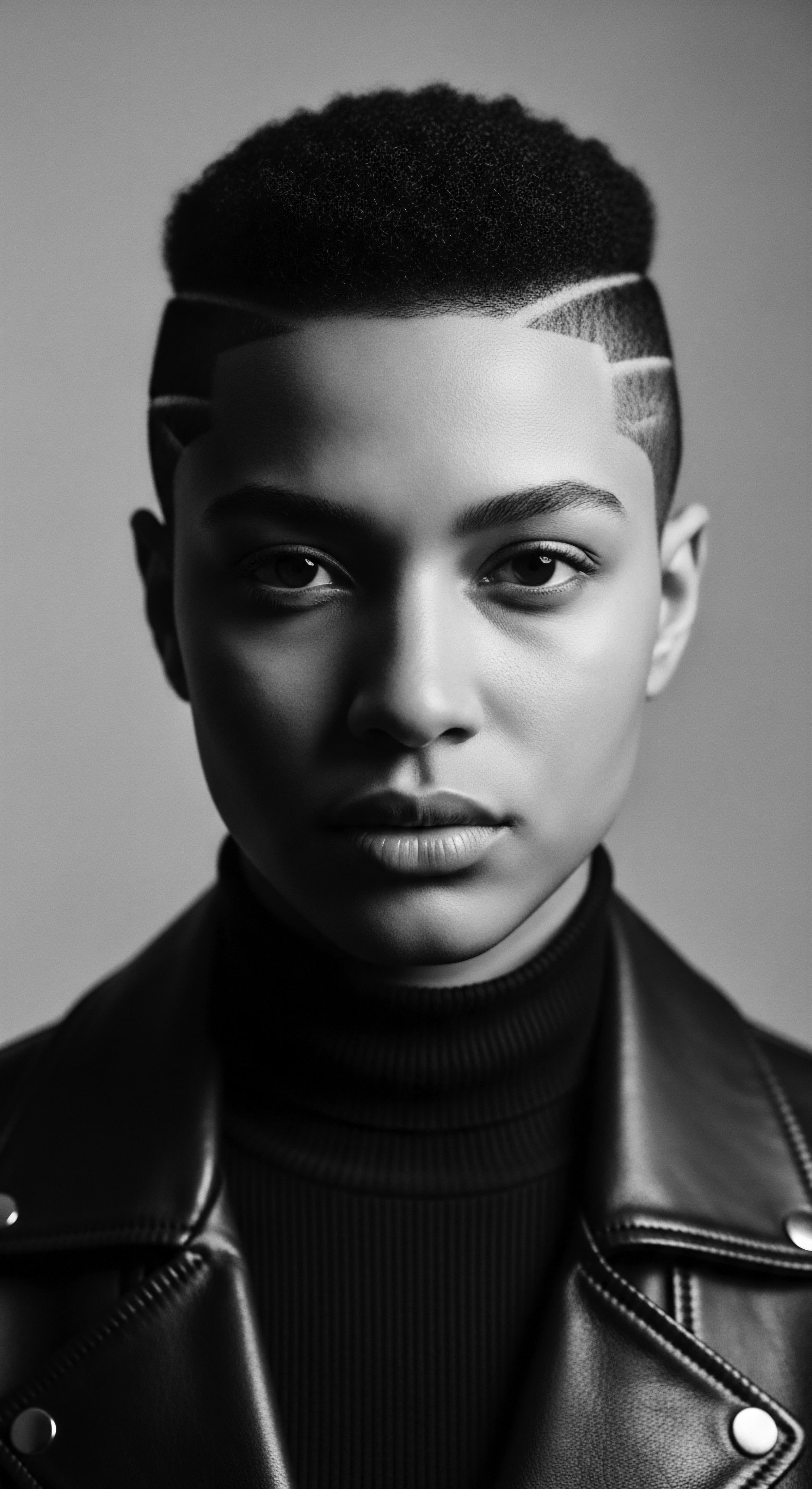
The Biology of Coils ❉ Microscopic Delineations and Ancestral Ingenuity
From a biological standpoint, the distinctions in hair classification stem primarily from the shape of the hair follicle and the distribution of keratin within the hair shaft. Textured hair, particularly coily and curly hair, emerges from elliptical or flattened follicles, which cause the hair to grow in a helical or spiral pattern. The unique structure of these follicles leads to an uneven distribution of keratin, resulting in points of weakness along the bends and curves of the strand. This inherent structural characteristic explains why textured hair often appears drier and is more susceptible to breakage if not properly cared for, a reality intuitively understood by ancestral communities who developed protective styles and moisture-retaining rituals that bypassed the need for formal scientific classification, relying instead on generations of empirical observation.
Moreover, the academic lens allows us to consider the genetic basis of hair texture. Research into the genetics of hair morphology has identified specific genes, such as EDAR and FGFR2, that influence hair straightness, waviness, and curliness across different populations. This genetic perspective provides a scientific grounding for the remarkable diversity observed in human hair, affirming that hair texture is a deeply inherited trait, a biological lineage passed down through generations, connecting individuals to their ancestral origins. This genetic inheritance is a testament to the profound continuity of heritage, encoded within every strand.

Beyond Phenotype ❉ Cultural and Ancestral Classification as Markers of Identity
While Western scientific classifications tend to focus on observable phenotypic traits, a comprehensive academic understanding of Hair Classification must incorporate cultural and ancestral frameworks. Many indigenous African societies, for instance, did not engage in rigid hair typing based on curl pattern. Instead, hair was classified by its social meaning, its ritualistic purpose, or its connection to age, status, or tribal affiliation.
Hair was a living extension of the self, a spiritual antenna, and its manipulation was often a sacred act, reflecting a deep connection to lineage and community. The meaning of hair transcended mere physical form.
For example, in various West African cultures, specific hairstyles or hair states indicated rites of passage, marital status, or mourning. The braiding patterns, the use of adornments, and the very act of grooming were profound forms of communication and identity. The ‘classification’ here was not about 3A or 4C; it was about the social syntax of hair.
A woman’s hair might be ‘classified’ as ready for marriage based on its length and the intricate style woven into it, or a child’s hair might be ‘classified’ as requiring specific protective charms based on ancestral beliefs and communal wisdom. These cultural classifications, while not scientific in the modern sense, held immense meaning and guided generations of hair care practices, demonstrating a holistic understanding of hair’s role in human life.
Consider the profound understanding of hair as a spiritual conduit among many African ethnic groups. For the Maasai, hair is integral to their identity and spiritual connection, often styled in elaborate ways to signify status and readiness for battle. Similarly, among the Yoruba, hair is considered a vital part of the body, often used in rituals and ceremonies, embodying a person’s spiritual essence.
This perspective shifts the meaning of hair classification from a purely aesthetic or biological exercise to a deeply spiritual and communal one, where hair is understood in relation to the unseen forces and the collective well-being. This is a classification based on metaphysical and social roles, a testament to the holistic view of hair within ancestral traditions, where its care was a sacred duty.
The academic discourse on Hair Classification also critically examines the limitations of current systems in addressing the needs and realities of mixed-race individuals. Often, these individuals possess multiple curl patterns on a single head, or textures that defy neat categorization, highlighting the inadequacy of singular, rigid systems. This ‘multi-textured’ reality calls for a classification that acknowledges fluidity and individual variation, rather than attempting to force diverse hair into narrow, predefined boxes. It underscores the need for a framework that honors the unique genetic and cultural legacies inherent in mixed-race hair, moving beyond simplistic labels to a recognition of its inherent complexity and beauty, which often reflects a beautiful confluence of ancestries.
The long-term consequences of an inadequate or biased hair classification system extend into psychological well-being, economic disparities, and social equity. When hair types, particularly those prevalent in Black and mixed-race communities, are marginalized or misunderstood by mainstream systems, it can lead to internalized negativity, product unavailability, and a perpetuation of discriminatory practices in schools, workplaces, and public spaces. The ongoing advocacy for legislation like the CROWN Act in the United States, which prohibits discrimination based on hair texture and protective hairstyles, is a direct response to the historical and ongoing impact of these biased classifications. It represents a societal recognition that hair classification, when misapplied or weaponized, has tangible, detrimental effects on human lives and dignity, hindering self-expression and belonging.
The expert-level definition of Hair Classification, therefore, necessitates a multi-disciplinary approach. It requires the precision of biology, the critical lens of sociology, the wisdom of anthropology, and the compassionate understanding of cultural studies. It is a call to re-evaluate how we categorize hair, not just for scientific accuracy, but for cultural respect, historical rectification, and the profound affirmation of identity that hair holds for millions across the globe, particularly those whose strands tell stories of resilience, resistance, and ancestral wisdom. This comprehensive perspective offers a pathway to a more inclusive and respectful understanding of hair’s multifaceted existence.
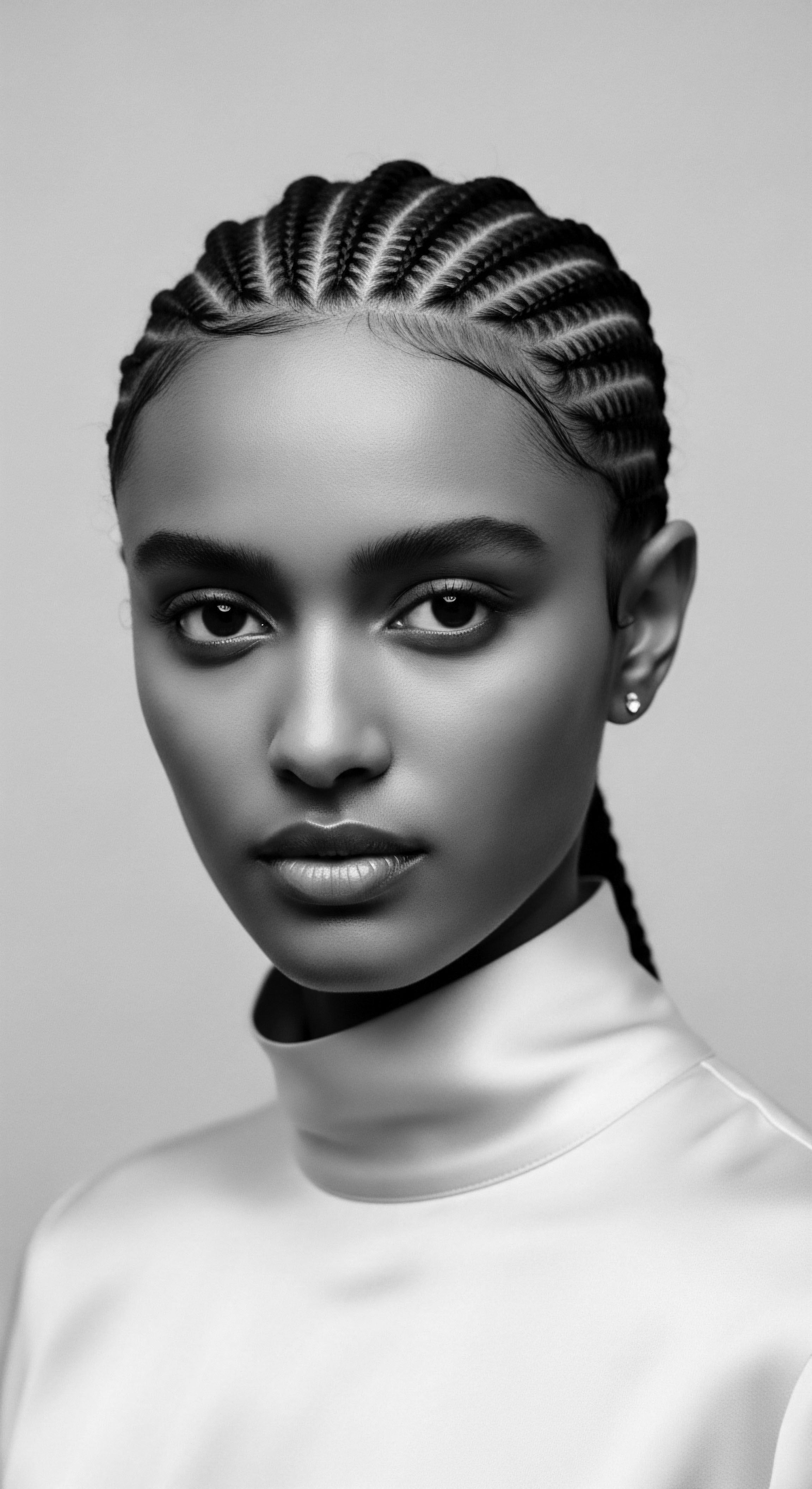
Ancestral Care Rituals ❉ A Deeper Look at Unwritten Classifications
Beyond formal categorization, ancestral communities possessed sophisticated unwritten classifications rooted in practical care. These distinctions were not about a number or letter, but about the hair’s responsiveness to specific treatments and its role in communal life. For instance, hair that felt ‘thirsty’ or ‘brittle’ would be treated with rich, emollient butters like shea or cocoa, a practical classification based on its hydration needs. Hair prepared for specific ceremonies might undergo rituals of cleansing with natural clays and herbs, followed by adornment with beads or cowrie shells, signifying its ceremonial ‘classification.’
The significance of these unwritten classifications lies in their holistic nature. They considered not just the hair’s physical state but also its spiritual health and its connection to the individual’s journey. This integrated understanding is a profound lesson for contemporary hair care, reminding us that true classification extends beyond mere surface appearance to encompass the deep cultural and personal meanings of hair.
- Hair for Protection ❉ Styles like cornrows and twists, often worn for extended periods, classified hair as needing protective measures against environmental damage and breakage. These styles were not just aesthetic; they were functional, preserving the hair’s health and allowing for growth.
- Hair for Ritual ❉ Hair designated for ceremonial purposes, such as during coming-of-age rites or weddings, was often treated with specific oils, herbs, and adorned with symbolic elements. This was a classification based on sacred function and cultural significance.
- Hair for Storytelling ❉ Certain braiding patterns or adornments could communicate a person’s marital status, age, or tribal affiliation. The hair itself became a classified text, conveying narratives about the individual’s place within the community and their personal history.
This deeper exploration reveals that hair classification is not a neutral act. It is a culturally embedded practice, with implications far beyond the superficial. By understanding its academic and historical context, we gain a more complete appreciation for the profound significance of every strand, especially those that coil and curve with the rich heritage of Black and mixed-race communities, embodying a legacy of strength and beauty.
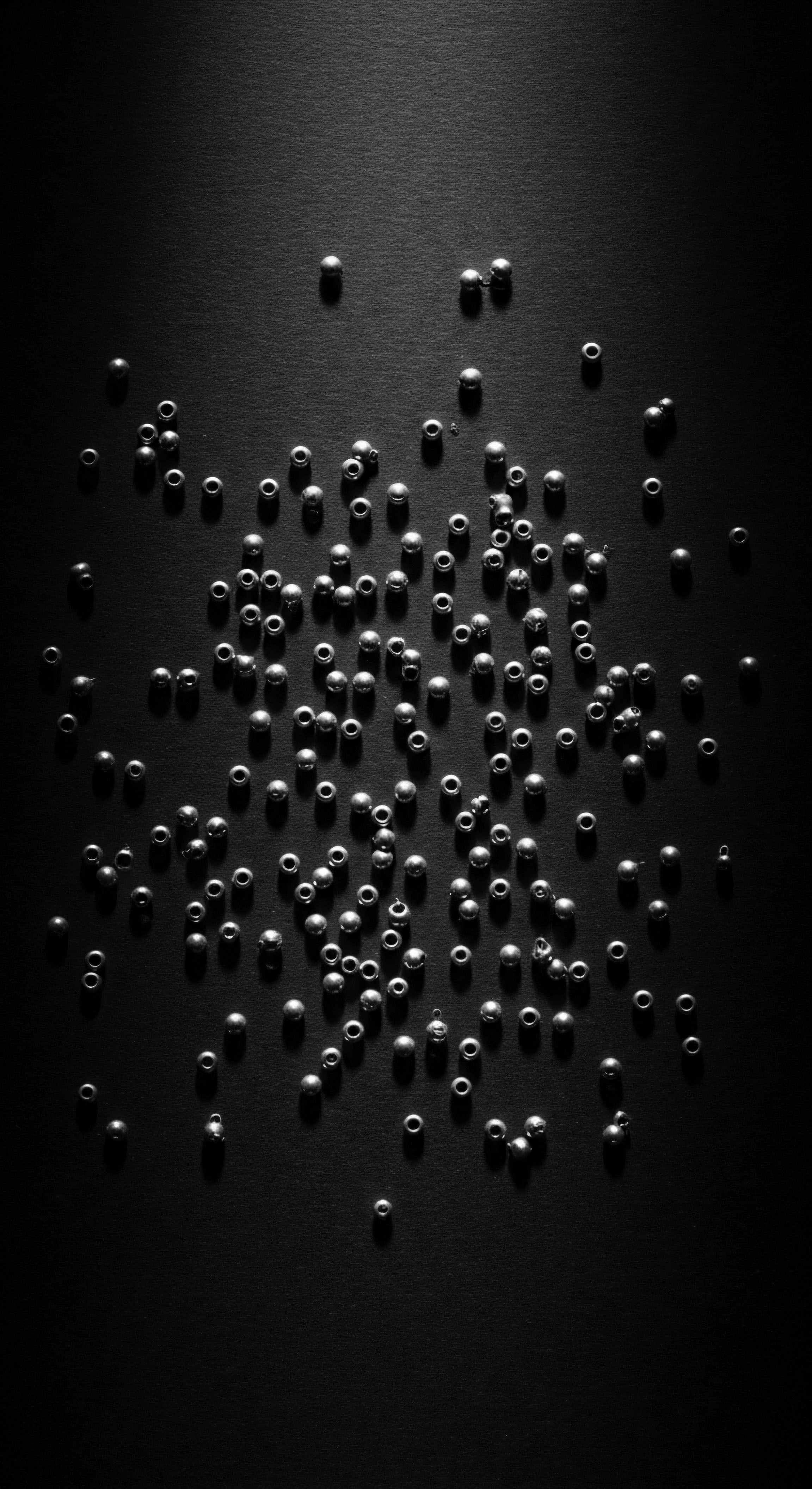
Reflection on the Heritage of Hair Classification
As we conclude our meditation on Hair Classification, we find ourselves standing at a profound juncture, where the whispers of ancestral wisdom meet the illuminating gaze of modern understanding. The journey through the delineation of hair, from its elemental biology to its intricate cultural expressions, reveals a truth often overlooked ❉ hair is not merely a biological appendage; it is a living archive, a tangible link to our past, and a vibrant declaration of our present and future. For Roothea, this understanding is the very soul of a strand, a testament to the enduring heritage of textured hair, a continuous thread of identity.
The various attempts to classify hair, whether through ancient observation or contemporary scientific inquiry, ultimately serve to deepen our reverence for its diverse forms. It is a recognition that each coil, each wave, each strand carries a unique story, a legacy of resilience, and a blueprint of ancestral memory. The tender care practices passed down through generations, often without formal categorization, intuitively understood the specific needs of textured hair, honoring its delicate structure and celebrating its robust spirit. These practices, born of necessity and deep love, represent a living classification system, one rooted in communal wisdom and a profound connection to the earth’s bounty, a true ‘Tender Thread’ of knowledge.
Our exploration of Hair Classification compels us to move beyond rigid boxes and embrace the fluidity and boundless beauty of Black and mixed-race hair. It is a call to reclaim narratives that have been marginalized, to elevate practices that have been dismissed, and to affirm the inherent dignity of every hair type. The heritage of textured hair is a testament to creativity, adaptation, and an unwavering spirit of self-expression. As we continue to unravel the mysteries of the helix, we do so with a profound sense of gratitude for the journey thus far and an open heart for the discoveries yet to come, always honoring the sacred thread that connects us to our origins, ensuring the ‘Unbound Helix’ continues to tell its story.

References
- Byrd, A. & Tharps, L. D. (2001). Hair Story ❉ Untangling the Roots of Black Hair in America. St. Martin’s Press.
- Banks, I. (2000). Hair Matters ❉ Beauty, Power, and Black Women’s Consciousness. New York University Press.
- Mercer, K. (1994). Welcome to the Jungle ❉ New Positions in Black Cultural Studies. Routledge.
- Weitz, R. (2004). Raphael’s Hair ❉ An Exploration of the History and Cultural Significance of Hair. Palgrave Macmillan.
- Tshuma, L. (2018). African Hair ❉ A Cultural and Historical Overview. African Perspectives Publishing.
- Hunter, L. (2011). Beauty Shop Politics ❉ African American Women’s Quest for Racial Agency. University of Illinois Press.
- White, S. (2000). Styling Masculinity ❉ Gender, Class, and Power in the Black Hair Salon. University of South Carolina Press.
- Patton, T. D. (2006). Bringing Our Hair to the Table ❉ A Critical Review of the Literature on Black Women’s Hair. Journal of Black Studies, 36(4), 569-586.
- Eglash, R. (2002). African Fractals ❉ Modern Computing and Indigenous Design. Rutgers University Press.
- Akbar, N. (1996). Light from Ancient Africa. New Mind Productions.
